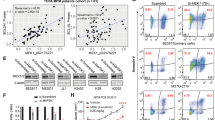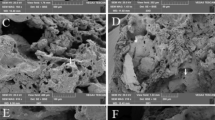Abstract
Exposure to asbestos fibers increases the risk of development of mesotheliomas and lung carcinomas, but not fibrosarcomas. We present data suggesting that resistance of fibroblasts to asbestos-induced carcinogenesis is likely to be connected with their lower ability to generate reactive oxygen species (ROS) in response to asbestos exposure and stricter control of proliferation of cells bearing asbestos/ROS-induced injuries. In fact, chrysotile (Mg6Si4O10(OH)8) asbestos exposure (5–10 μg/cm2) increased intracellular ROS and 8-oxo-guanine contents in rat pleural mesothelial cells, but not in lung fibroblasts. Simultaneously, moderate dosages of chrysotile and other agents increasing ROS levels (hydrogen peroxide, H2O2 and ethyl-methanesulfonate, EMS) inhibited cell cycle progression, in particular G1-to-S transition, in fibroblasts, but not in mesothelial cells. The arrested fibroblasts underwent cell death, while the majority of chrysotile-treated mesothelial cells survived. The differences in cell cycle response to asbestos/ROS-induced injuries correlated with distinct activity of p53-p21Cip1/Waf1 pathway in the two cell types. Chrysotile, H2O2 and EMS caused p53 upregulation in both cell types, but mesothelial cells, unlike fibroblasts, showed no accumulation of p21Cip1/Waf1. Of note, treatment with doxorubicin caused similar p53-dependent p21Cip1/Waf1 upregulation and cell cycle arrest in both cell types. This suggests differential response of fibroblasts and mesothelial cells specifically to asbestos/ROS exposure rather than to all DNA-damaging insults.
This is a preview of subscription content, access via your institution
Access options
Subscribe to this journal
Receive 50 print issues and online access
$259.00 per year
only $5.18 per issue
Buy this article
- Purchase on Springer Link
- Instant access to full article PDF
Prices may be subject to local taxes which are calculated during checkout







Similar content being viewed by others
References
Agapova LS, Ivanov AV, Sablina AA, Kopnin PB, Sokova OI, Chumakov PM and Kopnin BP . (1999). Oncogene, 18, 3135–3142.
Amundson SA, Myers TG and Fornace Jr AJ . (1998). Oncogene, 17, 3287–3299.
Barrett JC . (1994). Environ. Health Perspect., 102 (Suppl. 5), 19–23.
Bouvard V, Zaitchouk T, Vacher M, Duthu A, Canivet M, Choisy-Rossi C, Nieruchalski M and May E . (2000). Oncogene, 19, 649–660.
Brody AR . (1993). Environ. Health Perspect., 100, 21–30.
Burns TF and El-Deiry WS . (2003). Cancer Biol. Ther., 2, 431–443.
El-Deiry WS . (1998). Semin. Cancer Biol., 8, 345–357.
Fei P, Bernhard EJ and El-Deiry WS . (2002). Cancer Res., 62, 7316–7327.
Jaurand MC . (1997). Environ. Health Perspect., 105 (Suppl. 5), 1073–1084.
Jaurand MC, Bernaudin JF, Renier A, Kaplan H and Bignon J . (1981). In vitro, 17, 98–106.
Kamp DW, Graceffa P, Pryor WA and Weitzman SA . (1992). Free Radic. Biol. Med., 12, 293–315.
Ko LJ and Prives C . (1996). Genes Dev., 10, 1054–1072.
Kravchenko IV, Furalyov VA, Vasylieva LA and Pylev LN . (1998). Teratogen. Carcinogen. Mutagen., 18, 141–151.
Kravchenko IV, Furalyov VA, Vasylieva LA and Pylev LN . (2001). Teratogen. Carcinogen. Mutagen., 21, 315–323.
Levresse V, Moritz S, Renier A, Kheuang L, Galateau-Salle F, Mege JP, Piedbois P, Salmons B, Guenzburg W and Jaurand MC . (1998). Oncogene, 16, 1041–1053.
Levresse V, Renier A, Fleury-Feith J, Levy F, Moritz S, Vivo C, Pilatte Y and Jaurand MC . (1997). Am. J. Respir. Cell Mol. Biol., 17, 660–671.
Luce RA and Hopkins PB . (2001). Methods Enzymol., 340, 396–412.
Manning CB, Vallyathan V and Mossman BT . (2002). Int. Immunopharmacol., 2, 191–200.
Marnett LJ . (2000). Carcinogenesis, 21, 361–370.
Michael D and Oren M . (2003). Semin. Cancer Biol., 13, 49–58.
Mossman BT, Kamp DW and Weitzman SA . (1996). Cancer Invest., 14, 466–480.
Muhle H and Pott F . (2000). Int. Arch. Occup. Environ. Health, 73 (Suppl.), S53–S59.
Neuberger M and Vutuc C . (2003). Int. Arch. Occup. Environ. Health, 76, 161–166.
Pass HI and Mew DJ . (1996). J. Cell Biochem., 24 (Suppl.), 142–151.
Prives C and Hall PA . (1999). J. Pathol., 187, 112–126.
Pylev L, Vasilieva L, Krinari G, Bachtin A, Vesentsev A and Zubakova L . (2002). Gig. Sanit., 3, 61–64.
Richardson DS and Johnson SA . (1997). Blood Rev., 11, 201–223.
Royall JA and Ischiropoulos H . (1993). Arch. Biochem. Biophys., 302, 348–355.
Sablina AA, Chumakov PM and Kopnin BP . (2003). J. Biol. Chem., 278, 27362–27371.
Sablina AA, Chumakov PM, Levine AJ and Kopnin BP . (2001). Oncogene, 20, 899–909.
Shukla A, Ramos-Nino M and Mossman B . (2003). Int. J. Biochem. Cell Biol., 35, 1198–1209.
Skladanowski A and Konopa J . (1994). Biochem. Pharmacol., 47, 2269–2278.
Torday JS, Torday DP, Gutnick J, Qin J and Rehan V . (2001). Pediatr. Res., 49, 843–849.
Vasilieva L, Pylev L and Rovensky Y . (1998). Cancer Lett., 134, 209–216.
Acknowledgements
The work was supported by the International Research Scholars Program of the Howard Hughes Medical Institute (BPK) and the Russian Foundation for Basic Research (BPK and LNP).
Author information
Authors and Affiliations
Corresponding author
Rights and permissions
About this article
Cite this article
Kopnin, P., Kravchenko, I., Furalyov, V. et al. Cell type-specific effects of asbestos on intracellular ROS levels, DNA oxidation and G1 cell cycle checkpoint. Oncogene 23, 8834–8840 (2004). https://doi.org/10.1038/sj.onc.1208108
Received:
Revised:
Accepted:
Published:
Issue Date:
DOI: https://doi.org/10.1038/sj.onc.1208108
Keywords
This article is cited by
-
Roles of oxidative stress in signaling and inflammation induced by particulate matter
Cell Biology and Toxicology (2010)
-
ROS-mediated genotoxicity of asbestos-cement in mammalian lung cells in vitro
Particle and Fibre Toxicology (2005)



